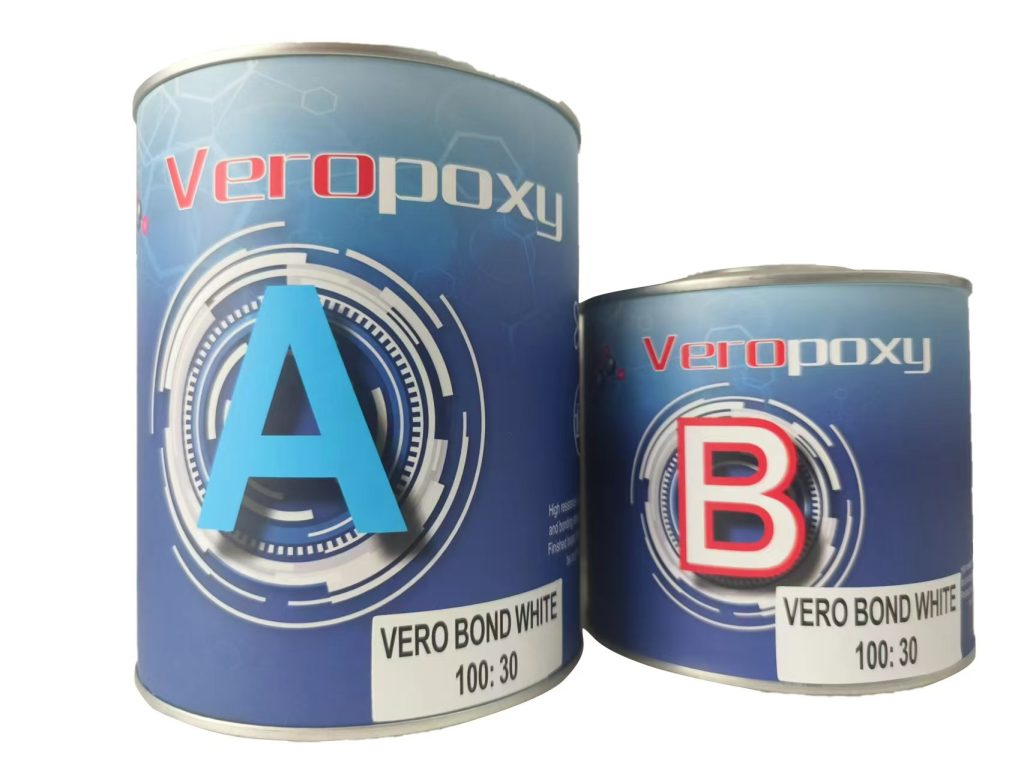Epoxy resin has revolutionized the stone industry, providing a reliable and durable adhesive for various applications, from marble countertops to outdoor sculptures. But in outside settings, epoxy resin has a great difficulty—ultraviolet (UV) radiation. UV light can gradually reduce the adhesive qualities of some epoxy resins, resulting in discolouration, brittleness, and even cracking. Understanding and improving epoxy resin’s UV resistance is crucial as builders, designers, and architects depend more on it to bond stone in outdoor projects.
But how does UV light affect epoxy resin, and what strategies can improve its resilience? Examining its relevance, constraints, and methods of best performance in sunny environments, this article explores the science underlying the UV resistance of epoxy resin. Come explore with us the secrets to increase the lifetime of epoxy-bonded stone in the great outdoors.

How UV Light Affects Epoxy Resin
Surprisingly harmful to synthetic materials including epoxy resin is UV radiation. Photodegradation—that is, the breakdown of the chemical bonds within the epoxy resin—can be brought about by UV light. This depravity can lead to:
1.Yellowing and Discoloration: UV exposure often causes epoxy resin to turn yellow over time, which is undesirable, especially when clarity is essential, as in decorative stone applications.
2.Loss of Strength and Flexibility: Prolonged exposure to UV can make epoxy resin brittle, reducing its flexibility and adhesive strength, which is crucial for holding stone surfaces in place.
3.Surface Cracking: With time, UV-damaged epoxy resin may start to crack on the surface, compromising the bond between the resin and the stone.
Given these effects, it’s clear why UV-resistant epoxy resin is necessary for outdoor stone projects. Still, not all epoxy resins are naturally UV-resistant, thus extra steps are usually needed.
Strengthening UV resistance in epoxy resin for stone bonding
1. UV-Stabilizers and Additives
One of the most effective ways to boost epoxy resin’s UV resistance is by adding UV stabilizers or absorbers to the formulation. These compounds either absorb or deflect UV light before it may pass through the resin and inflict damage. Common UV stabilisers reduce photodegradation and slow down yellowing by means of benzotriazoles and hindered amine light stabilisers (HALS). Although these chemicals do not make epoxy resin immune to UV, they increase its lifetime under sunlight, hence they are more appropriate for outdoor stone projects.
2. Top Coatings and Sealants
Applying a UV-resistant topcoat over epoxy resin can shield it from direct sunlight, reducing the impact of UV radiation. Acting as a barrier, this topcoat keeps the epoxy from absorbing too much UV energy. Usually used to guard epoxy resin from UV damage are acrylic-based or polyurethane coatings. Top coatings, however, can fade with time and may need regular application particularly in high-sunlight environments.
3. Pigmented Epoxy Resin
Transparent epoxy resin is more susceptible to UV damage because UV rays penetrate deeper into clear materials. One can lower UV penetration by including pigments into the resin. Pigments minimise the degree of UV degradation by reflecting some UV light. Applications where a solid or opaque look is acceptable will find pigmented epoxy resin useful.
4. Modified Epoxy Resin Formulations
Certain modified epoxy resins are made especially to resist UV radiation. Long-term outdoor use of these resins is ideal since their chemical structures withstand UV-induced degradation. To improve its general resilience, some sophisticated formulations combine epoxy with other UV-stable components. Though modified epoxy resin can be more costly, for outdoor stone projects where durability is crucial it is usually a good investment.
5. Testing for UV Resistance
Before committing to a particular epoxy resin product for an outdoor stone project, conducting UV resistance testing can help verify its suitability. Accelerated UV testing of resin samples allows one to replicate years of sun exposure in few weeks. This testing offers important new perspectives on the performance of the resin, including the degree of yellowing and whether structural integrity suffers with time.
6. Proper Application Techniques
The way epoxy resin is applied can also impact its UV resistance. Following manufacturer recommendations for curing and ensuring a homogeneous layer of resin will help to increase durability. Epoxy resin may have microscopic flaws when improperly cured that hasten UV breakdown. A strong, UV-resistant bond depends on correct mixing ratios, curing times, and application techniques.
The Future of UV-Resistant Epoxy Resins
The demand for UV-resistant epoxy resin is growing as more designers and builders explore the aesthetic and functional possibilities of stone in outdoor spaces. Resin chemistry innovations centre on producing epoxy formulations naturally more UV damage resistant. For instance, some researchers are looking at nanoparticle additions that improve UV resistance without compromising transparency, so providing fresh opportunities for clear stone adhesives. The progress of such sophisticated epoxies will increase the uses of stone-bonding adhesives in outdoor projects.

Epoxy resin’s role in stone bonding is undeniable, especially for applications requiring strong, lasting adhesion. On outdoor projects, however, conventional epoxy resins may fade under UV light and cause problems including yellowing, cracking, and bond breakdown. Selecting UV-resistant formulations, applying protective coatings, and following best practices helps one to produce epoxy resin bonds that hold true—even in strong sunlight.
Future generations of UV-resistant epoxy resins that let us push the envelope of stone design without sacrificing durability could soon be here as developments continue. For now, the strongest, most beautiful stone projects under the sun depend on knowledge of and ability to address UV vulnerability in epoxy resin.
Post time: 11 月-07-2024

